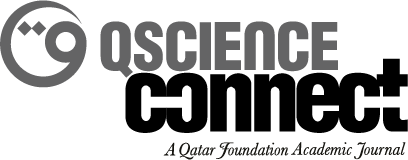-
oa Brief Report: An Art Therapy Pilot Dyadic (parent/caregiver and child) Telehealth for Children Living with Autism Spectrum Disorder
- Source: QScience Connect, Volume 2022, Issue Issue 3- Medical Humanities in the Middle East Conference, Aug 2022, 33
-
- 31 August 2022
Abstract
Due to COVID-19 safety protocols, the vulnerable within our community had limited access to resources. Children of determination have encountered disruption to therapeutic services especially from March 2020 to November 2020. The pilot attempted to address question(s) of feasibility in maintaining services, preventing mental health and deterioration of symptoms and behaviour, and in increasing access to resources for children with Autism Spectrum Disorder (ASD). The research looked to question, if online services could substitute in-person services with this population, and to determine plausibility of online group art therapy services for children and their caregivers. The impact of COVID-19 on mental health is still unclear; early published reports indicate the onset of moderate to severe depressive symptoms, anxiety, and stress, potentially having a prolonged psychological impact on some individuals (Qiu et al., 2020). Overall, there is a lack of literature on art therapy in the region, and more so for online intervention, specifically in support of ASD during the pandemic. ASD is a neurodevelopmental disorder that impairs a person’s ability to communicate, socialize, and respond to certain stimuli within environments. Parents, pediatricians, and nurseries typically identify concerns that prompt diagnosis, ideally by age 3; prevalence is higher in males than females (Elsabbagh et al., 2012). ASD is recognized by delayed language development, repetitive and stereotyped patterns of behavior, impacting imagination, and difficulty with social interaction (Rapin & Dunn, 1997). Overall, the Middle East has had relatively little published research on ASD etiology, although statistics indicate that ASD affects 1 in 146 births in the United Arab Emirates (UAE) (Virolainen, 2020). Genetic linkage such as kinship and multiparity is culturally and regionally common. Epidemiological research into autism in the UAE is relatively new. The prevalence of autism likely remains underdetermined as many cases of autism potentially go undiagnosed within the community due to stigma and lack of awareness; mild cases can be unnoticed, and delayed diagnoses might result from a lack of focus or training in the area of early intervention (Salhia et al., 2014). It is, therefore, crucial that there is a continuation of support without disruption. Art Therapy is an integrative mental health profession that engages participants with the creative process, active art-making, and integrated psychological theory within the context of a therapeutic relationship (American Art Therapy Association, 2020). Art psychotherapists have a minimum of a master’s degree in art psychotherapy with clinical practice and supervised experience before gaining professional registration, a rigorous process. Children with autism are generally referred to art therapy specifically in the West (Martin, 2009; Teeuw, 2011) to support coping with communication challenges, behaviour, and low self-esteem (Schweizer et al., 2014; Schweizer et al., 2017). Research demonstrates that children with autism are expected to benefit from a non-verbal treatment such as art therapy, through sensory exploration, looking at, and shaping art materials to facilitate expression (Malchiodi, 2003; Rubin, 2001; Schweizer et al., 2009). This pilot study explores if conducting art therapy online would be beneficial and fill the gap when in-person services are not possible.


